Abstract
In vitro tests were performed with Sch 21420 and Sch 22591 to determine (i) their activity in comparison to six other aminoglycosides against 343 clinical isolates, and (ii) whether synergy with penicillin G could be demonstrated with enterococci. In broth dilution tests, Sch 22591 was more active than the seven other aminoglycosides against Staphylococcus aureus, Enterobacteriaceae, and most nonfermenting gram-negative bacilli. Sch 22591 was as active as tobramycin against Pseudomonas aeruginosa. The activity of Sch 21420 was comparable to gentamicin, sisomicin, netilmicin, and tobramycin but greater than amikacin or kanamycin against S. aureus and most genera of Enterobacteriaceae. Sch 21420, amikacin, and kanamycin were (i) more active than the other five aminoglycosides against Proteus rettgeri and Providencia stuartii, but (ii) less active than the other five aminoglycosides against Neisseria gonorrhoeae, enterococci, most nonfermenting gram-negative bacilli, Proteus mirabilis, and Proteus morganii. Studies on the bactericidal activity of Sch 22591 with penicillin indicated a synergistic interaction against enterococci, including strains highly resistant to streptomycin and kanamycin. This could be demonstrated with combinations containing 3.0 to 6.0 μg of Sch 22591 per ml and was comparable to that observed with penicillin/gentamicin. Penicillin plus Sch 21420 (25 μg/ml) also demonstrated synergy against enterococci, including strains highly resistant to streptomycin. However, synergy did not occur against strains highly resistant to kanamycin. These latter results were similar to those obtained in tests with penicillin/kanamycin.
Full text
PDF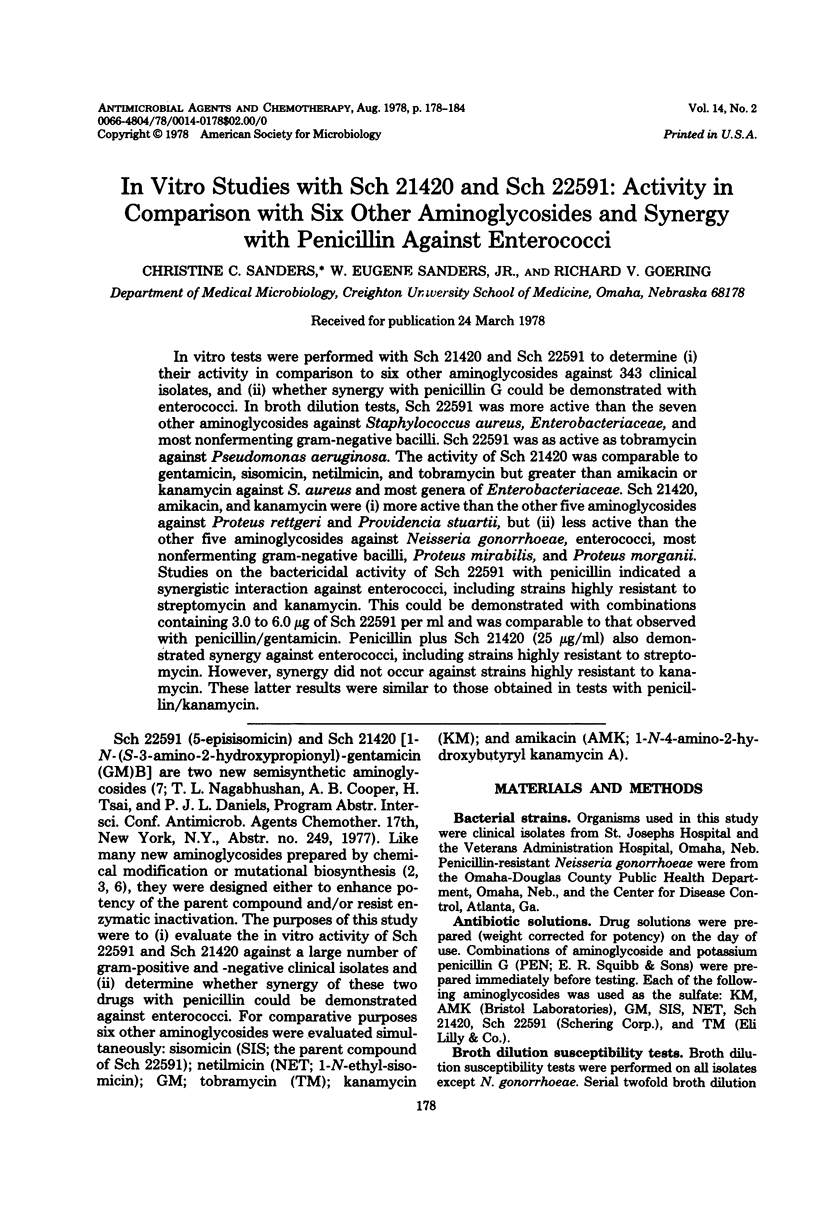

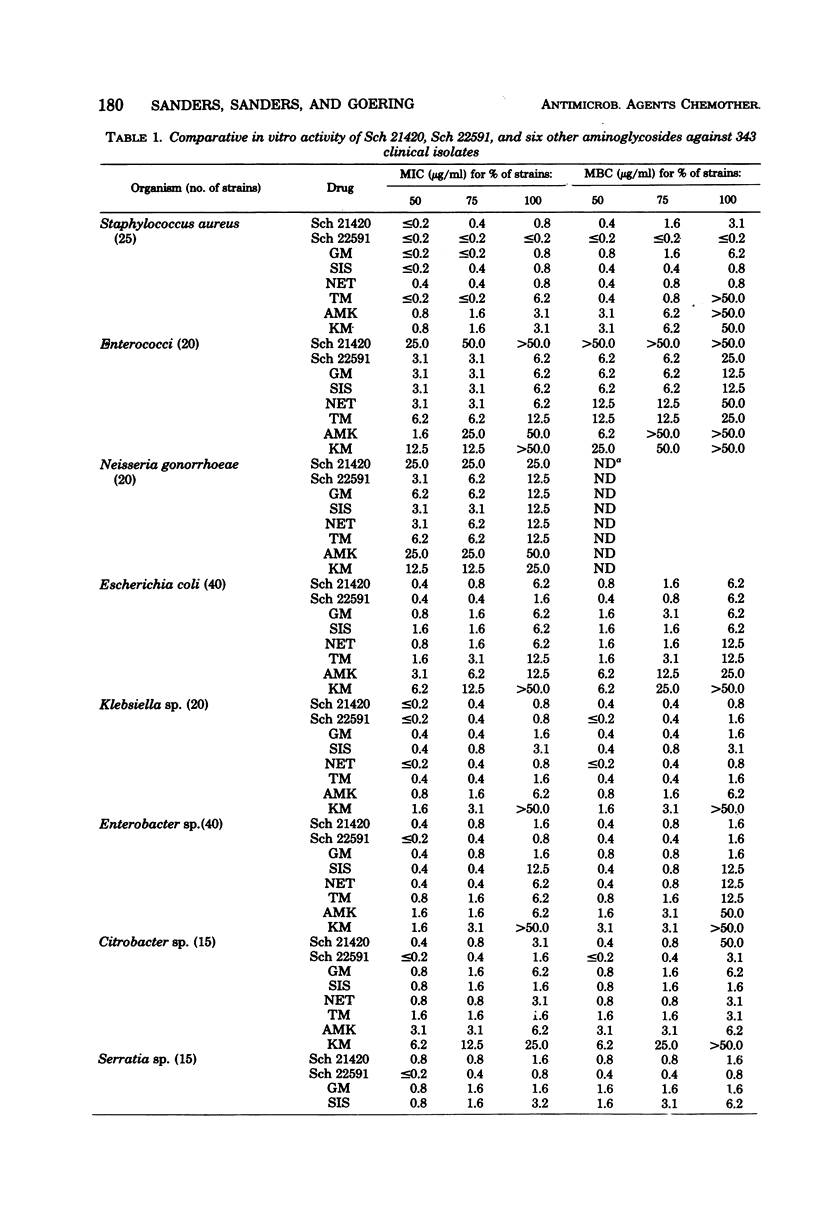
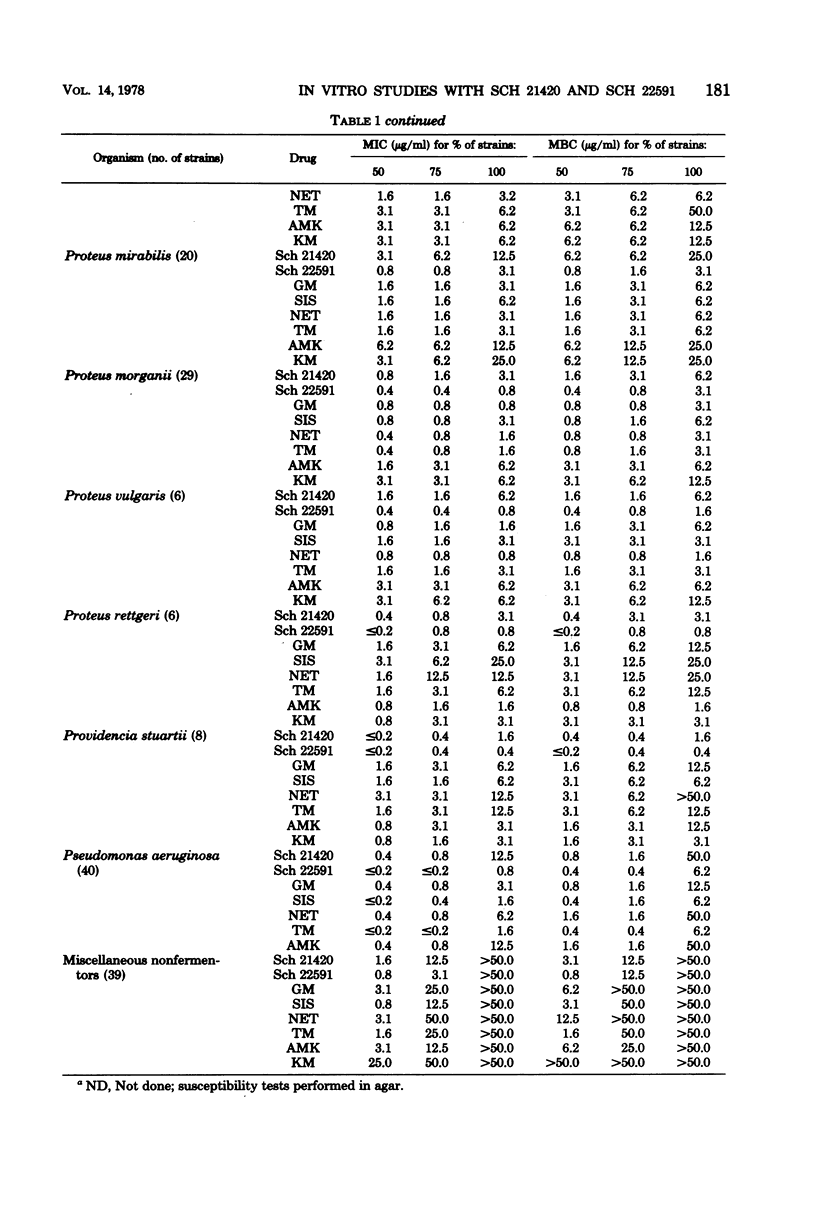
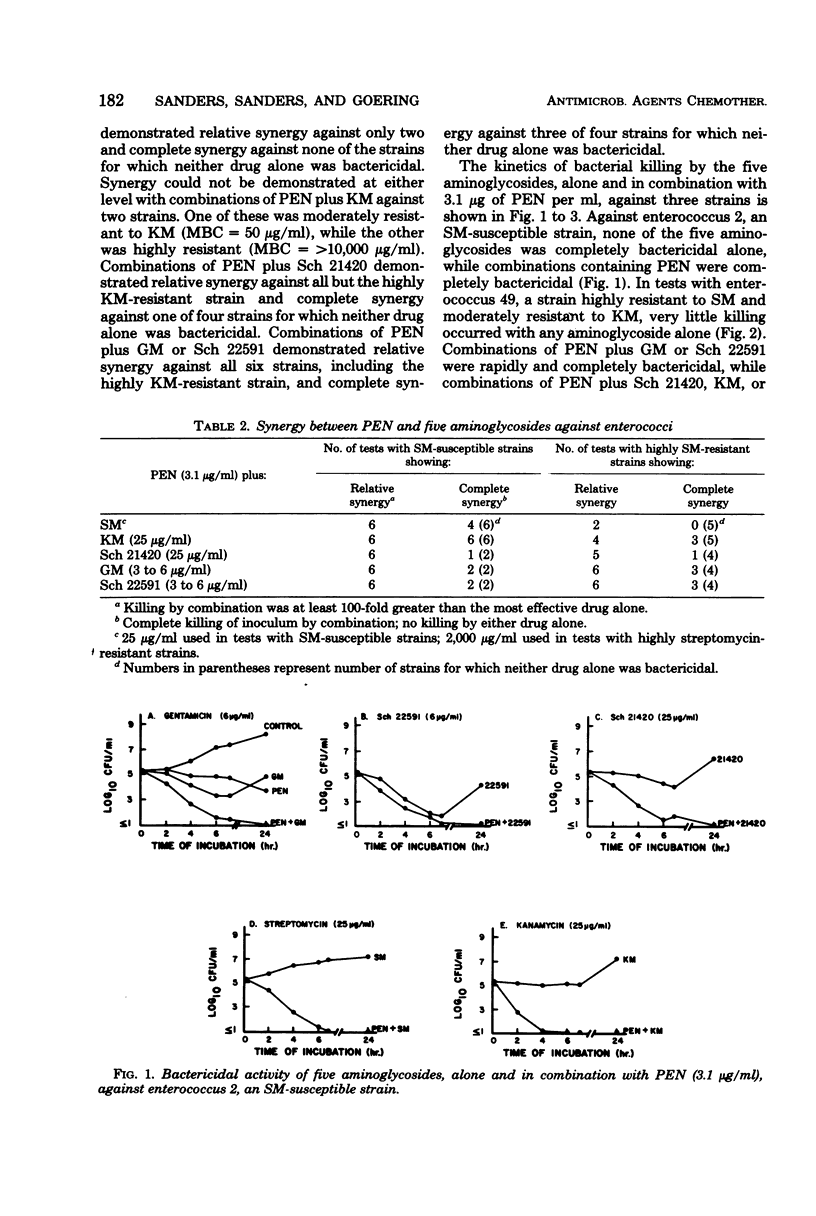
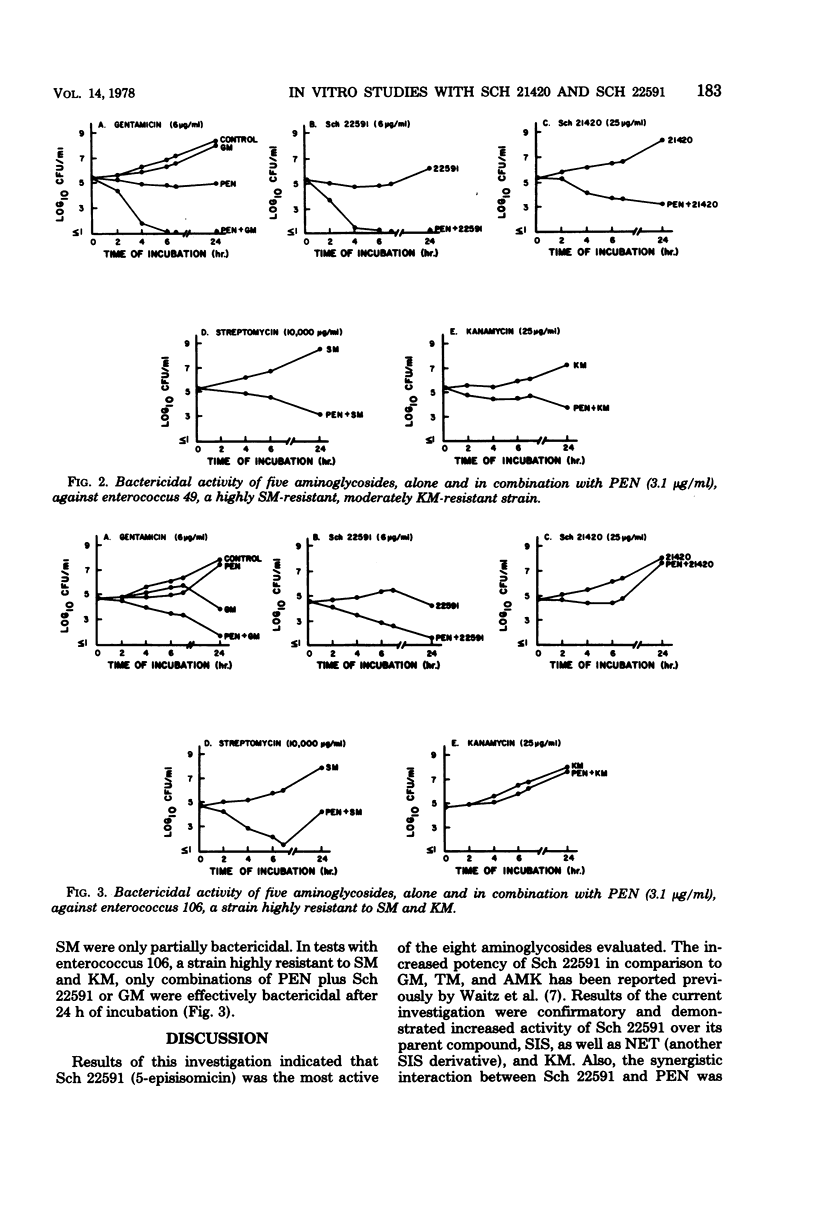
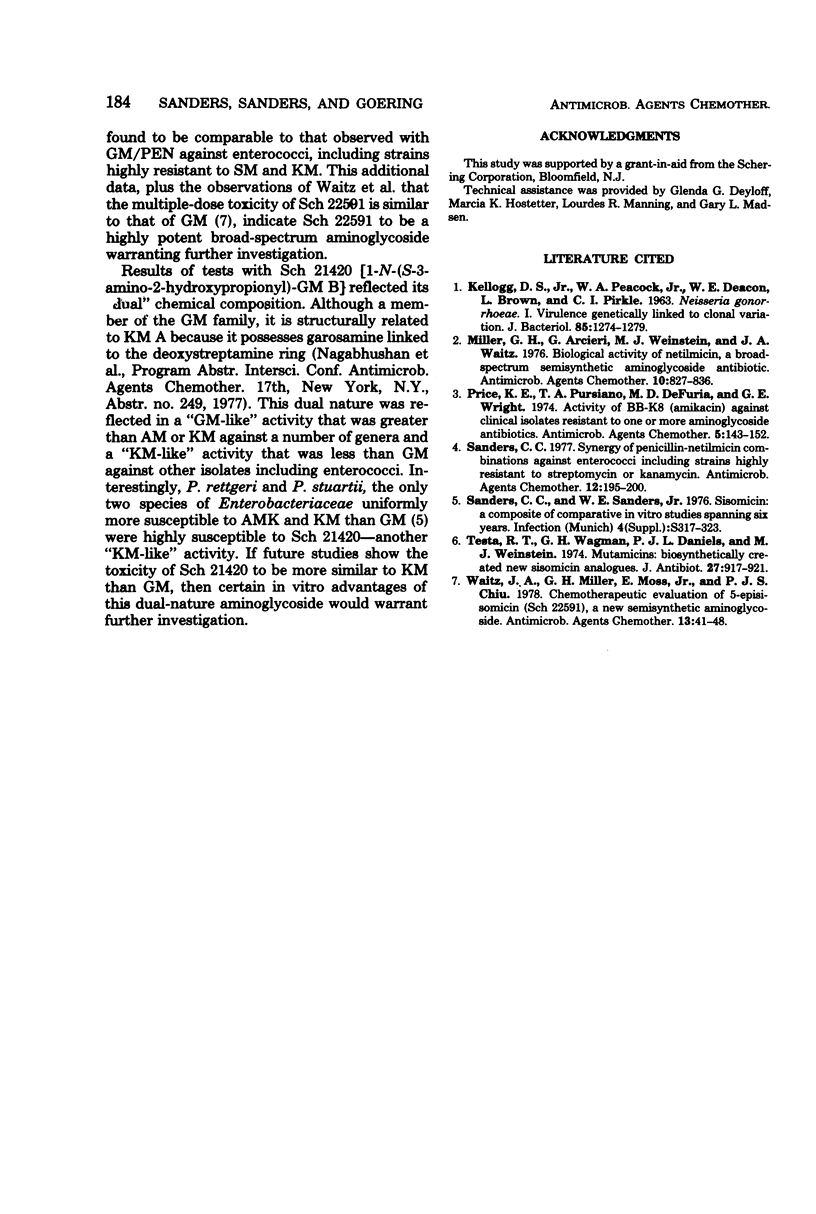
Selected References
These references are in PubMed. This may not be the complete list of references from this article.
- KELLOGG D. S., Jr, PEACOCK W. L., Jr, DEACON W. E., BROWN L., PIRKLE D. I. NEISSERIA GONORRHOEAE. I. VIRULENCE GENETICALLY LINKED TO CLONAL VARIATION. J Bacteriol. 1963 Jun;85:1274–1279. doi: 10.1128/jb.85.6.1274-1279.1963. [DOI] [PMC free article] [PubMed] [Google Scholar]
- Miller G. H., Arcieri G., Weinstein M. J., Waitz J. A. Biological activity of netilmicin, a broad-spectrum semisynthetic aminoglycoside antibiotic. Antimicrob Agents Chemother. 1976 Nov;10(5):827–836. doi: 10.1128/aac.10.5.827. [DOI] [PMC free article] [PubMed] [Google Scholar]
- Price K. E., Pursiano T. A., DeFuria M. D. Activity of BB-K8 (amikacin) against clinical isolates resistant to one or more aminoglycoside antibiotics. Antimicrob Agents Chemother. 1974 Feb;5(2):143–152. doi: 10.1128/aac.5.2.143. [DOI] [PMC free article] [PubMed] [Google Scholar]
- Sanders C. C. Synergy of penicillin-netilmicin combinations against enterococci including strains highly resistant to streptomycin or kanamycin. Antimicrob Agents Chemother. 1977 Aug;12(2):195–200. doi: 10.1128/aac.12.2.195. [DOI] [PMC free article] [PubMed] [Google Scholar]
- Testa R. T., Wagman G. H., Daniels P. J., Weinstein M. J. Mutamicins; biosynthetically created new sisomicin analogues. J Antibiot (Tokyo) 1974 Dec;27(12):917–921. doi: 10.7164/antibiotics.27.917. [DOI] [PubMed] [Google Scholar]
- Waitz J. A., Miller G. H., Moss E., Jr, Chiu P. J. Chemotherapeutic evaluation of 5-episisomicin (Sch 22591), a new semisynthetic aminoglycoside. Antimicrob Agents Chemother. 1978 Jan;13(1):41–48. doi: 10.1128/aac.13.1.41. [DOI] [PMC free article] [PubMed] [Google Scholar]


